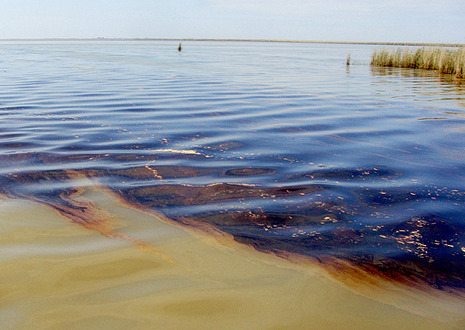 How much oil do YOU think is gone from the Gulf? Your guess is as good as the federal government’s.Photo: U.S. Coast GuardWe’re making progress. The big question about the BP leak is no longer the lame “Where’s the oil?” Now it’s “How much oil is still out there?” The answer? Well, pick a number.
How much oil do YOU think is gone from the Gulf? Your guess is as good as the federal government’s.Photo: U.S. Coast GuardWe’re making progress. The big question about the BP leak is no longer the lame “Where’s the oil?” Now it’s “How much oil is still out there?” The answer? Well, pick a number.
Crude math: Today, we have a new estimate, this one from Ian MacDonald, an oceanographer from Florida State University. He told a House Energy and Commerce subcommittee that only 10 percent of the oil that gushed out of the Deepwater Horizon well was “actually removed from the ocean.” MacDonald’s assessment is even more pessimistic than the estimate a team of Georgia scientists offered earlier this week. And it’s wildly at odds with what the feds have been saying — that as much as 75 percent of the oil is gone. MacDonald points out that the government’s calculations included the 800,000 barrels that were captured and never actually leaked into the sea. In his testimony [PDF] the middle-aged MacDonald also said:
Judging from past spills in the Gulf, this material will remain potentially harmful for decades. I expect the hydrocarbon imprint of the BP discharge will be detectable in the marine environment for the rest of my life. The oil is not gone and is not going away anytime soon.
Another expert witness at the hearing, Lisa Suatoni, senior scientist for the Natural Resources Defense Council, said the feds also have some explaining to do on exactly how they’re testing the seafood coming out of the Gulf:
Much of the data on contamination in Gulf seafood are not publicly available, so scientists cannot independently review the findings. NOAA has released data on less than 100 samples out of thousands that they say they have, and only on finfish, not shrimp.
Oil’s well that ends well: The good news for the Obama administration is that out of sight is out of mind for the American public. The latest AP-GfK poll [PDF] finds that 60 percent of the people surveyed last week think the BP leak is extremely or very important, down from 87 percent in mid-June. The poll also suggests that support for off-shore drilling is climbing again — now at 48 percent compared to 45 percent in June. Even BP’s stock is on the rise — about one-third of those surveyed actually say the oil giant is doing a good job. That’s twice as many fans as two months ago.
But Barack Obama doesn’t want people to forget everything about the BP leak. He’d especially like voters to remember Rep. Joe Barton’s (R-Texas) apology to BP earlier this summer. Which is why the president keeps bringing it up when he’s out stumping for endangered Democratic candidates.
Another politician playing up images of oily water is California Sen. Barbara Boxer. As Maeve Reston points out in the Los Angeles Times, Boxer’s been pounding Carly Fiorina, her Republican rival, for Fiorina’s support of off-shore drilling, and reminding constituents about the environmental and economic consequences of a similar spill along the California coast.
Just our luck: The summer of living dangerously goes on, with more violent storms and landslides in China. Andrew Revkin, in his Dot Earth blog, shares this different and disturbing take on the extreme weather from Steven Sherwood, a climate scientist in Sydney, Australia:
The “loading the dice” analogy is becoming popular but it misses something very important: climate change also allows unprecedented (in human history) things to happen. It is more like painting an extra spot on each face of one of the dice … This increases the odds of rolling 11 or 12, but also makes it possible to roll 13. What happens then?
Bill McKibben, writing in The Guardian, weighs in on the stunningly tepid political response to the havoc this summer’s unprecedented weather is wreaking around the world:
… but this is no longer an environmental battle. As this summer demonstrates, if you’re concerned about development, climate change is issue No 1 (how much development is going to go on in Pakistan, now that its bridges are all gone?). If you’re concerned about war and peace, climate change is issue No 1 (when Russia stops sending grain to Egypt and Nigeria, and when wheat prices start to rise, what do you think comes next?). If you’re concerned about the future, then climate change is issue No 1 — because this summer is a tiny taste of what the future is all about.
Does green beer count? Okay, so it won’t impress high school seniors as much as making the Top Party Schools list, but let’s give it up for the colleges that made the Sierra Club’s list of America’s Greenest Campuses. Greenest of all is, aptly named, Green Mountain College in Vermont. The school gets power and heat from biomass and biogas and plans to be carbon-neutral by next year. Rounding out the top five are Pennsylvania’s Dickinson College, Evergreen State College in Washington, the University of Washington, and Stanford.
Of course, everything changes once we can harness the incredible power of beer pong.



